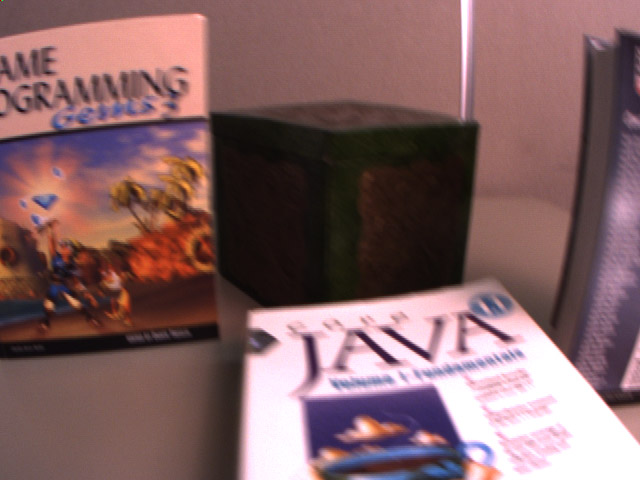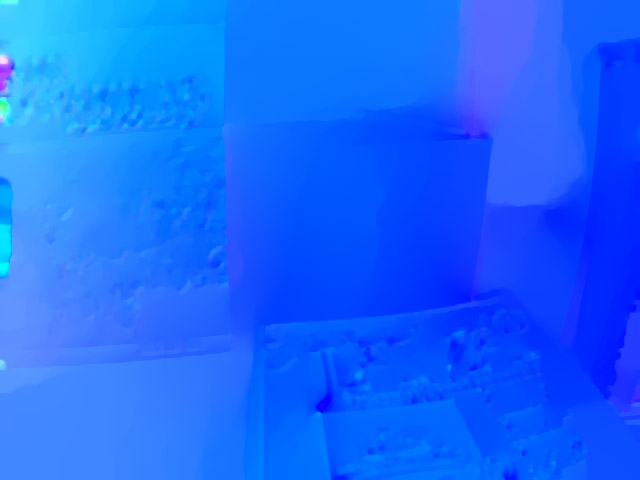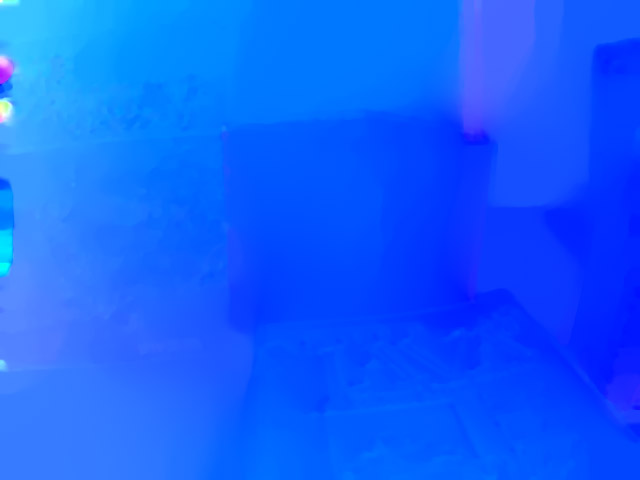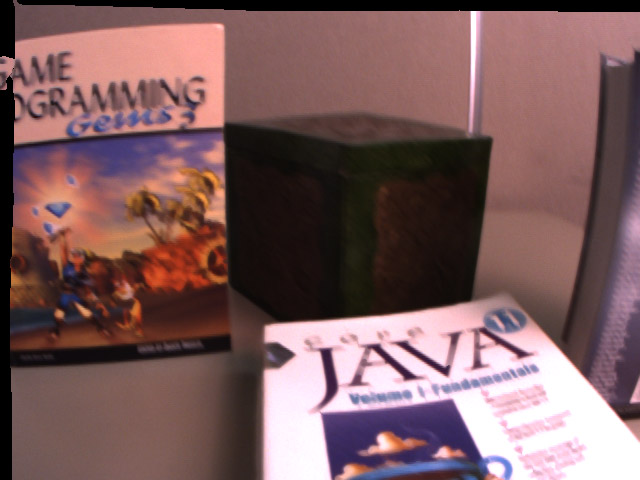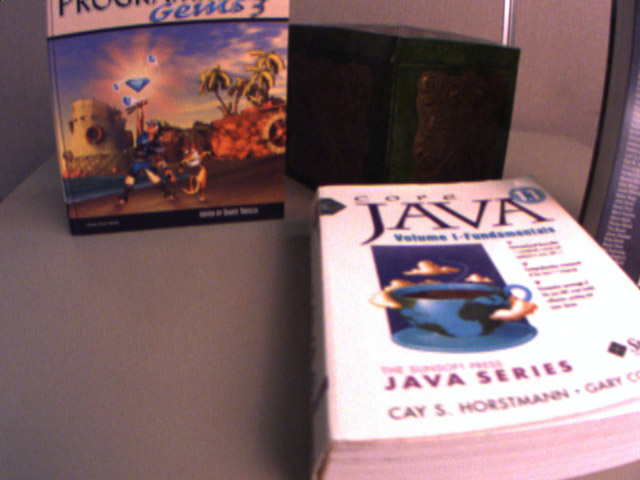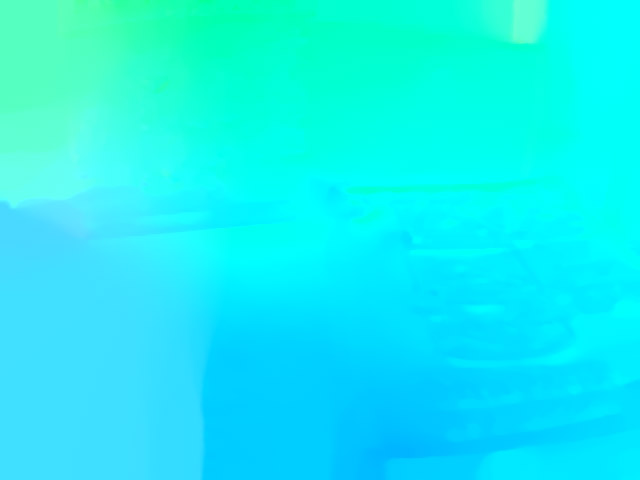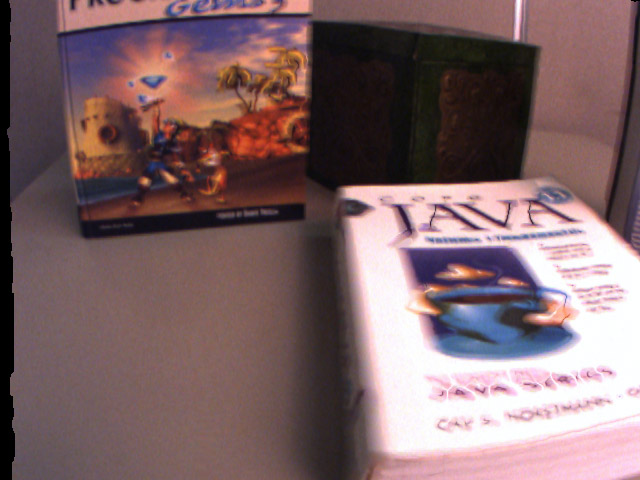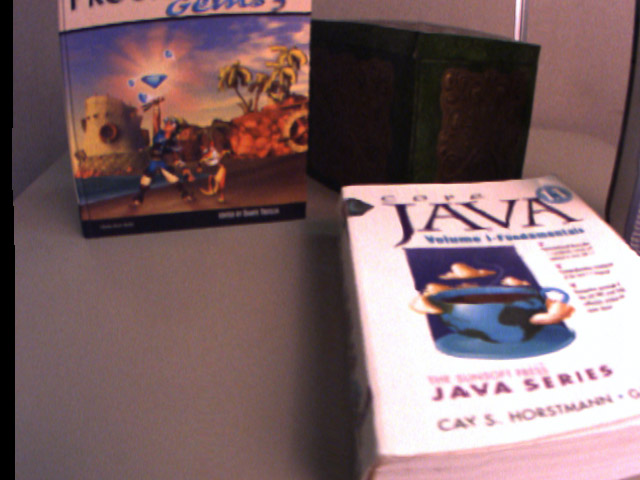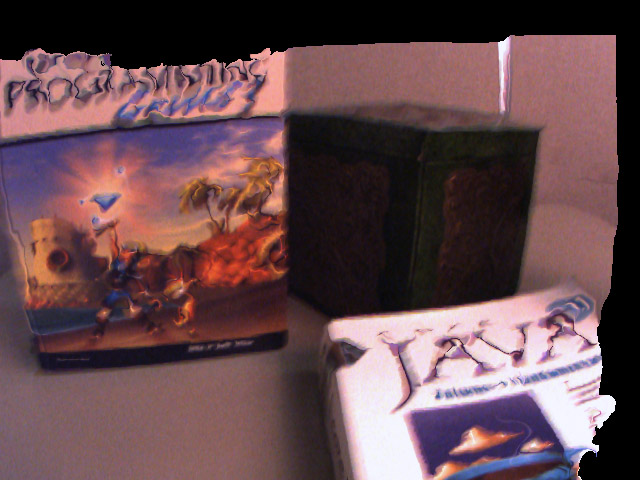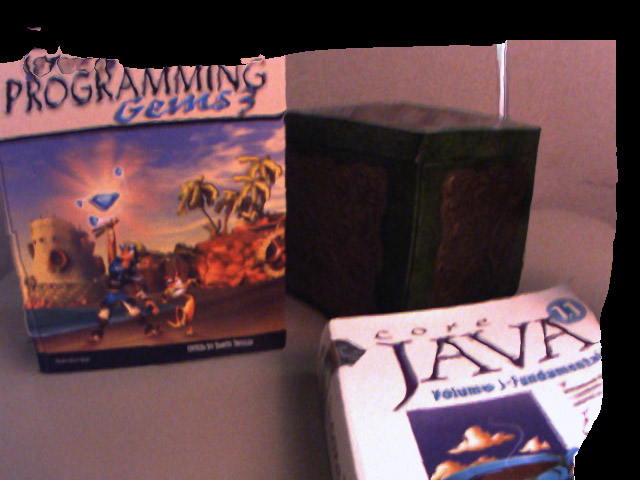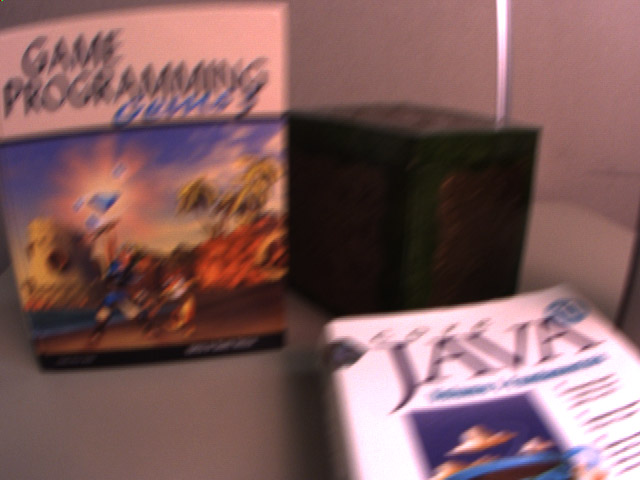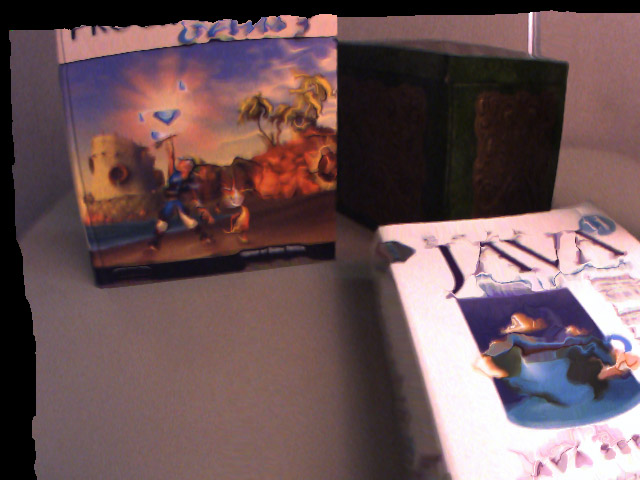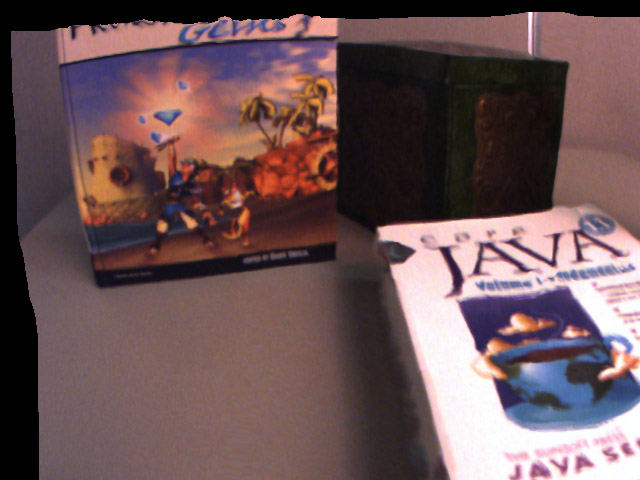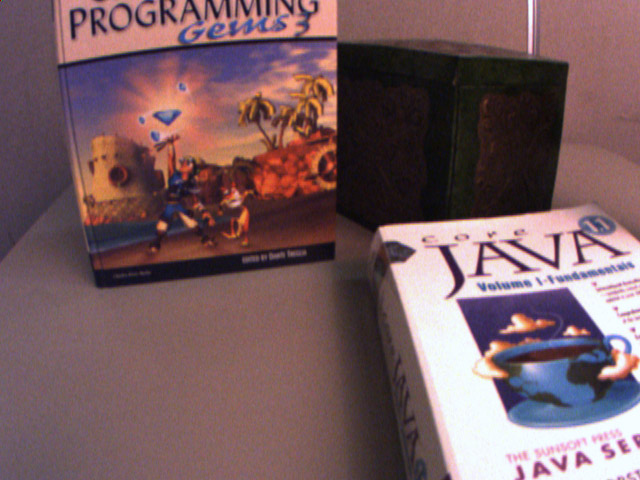Real Examples: Books Sequence
The books sequence. This sequence was recorded at 30 frames per second with a Point Grey Grasshopper with a variable exposure time. The camera automatically adjusts the gain to compensate for the changes in exposure time, which results in variable noise levels. The variable exposure time makes the video appear jumpy when played back at full speed. Click on the video to start playing.
- Flow result from frame 14 to 13
- Flow result from frame 34 to 35
- Concatenated flow result from frame 20 to 25
- Concatenated flow result from frame 31 to 35
Pairwise flows
Frame 14 to frame 13
In this example, the source (frame 13) is blurred, and the target (frame 14) is sharp.
Please move your mouse cursor over the small images to toggle between the results.
| Target | Source | Baseline flow | Our flow | Baseline warping | Our warping |
|---|---|---|---|---|---|
|
|
|
|
|
|
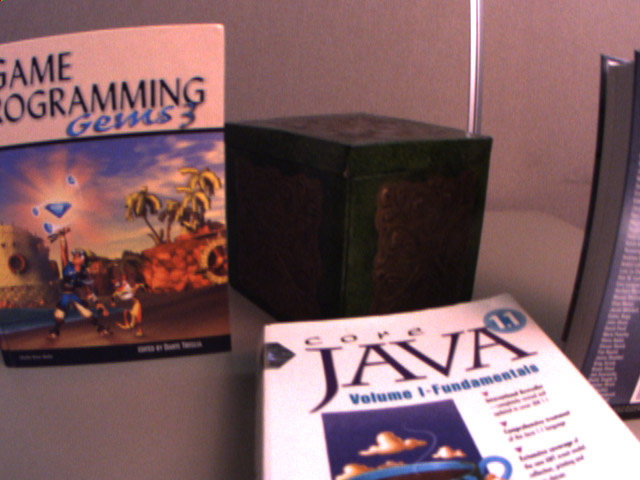
Frame 14 (target) |
|||||
The baseline method tries to warp the blurred source frame to match the sharpness of the target frame. As such, the baseline warping has sharper edges. However, we can easily distinguish features of the flat book surfaces in the baseline flow map visualization (click on the third small image), which should not be possible with an accurate flow field. This effect is much less noticeable in our result, which indicates that our flow is more accurate. As such, our method better preserves the appearance of the source while warping it to space of the target.
Frame 34 to frame 35
In this example, the source (frame 35) is sharp, and the target (frame 34) is blurred.
| Target | Source | Baseline flow | Our flow | Baseline warping | Our warping |
|---|---|---|---|---|---|
|
|
|
|
|
|
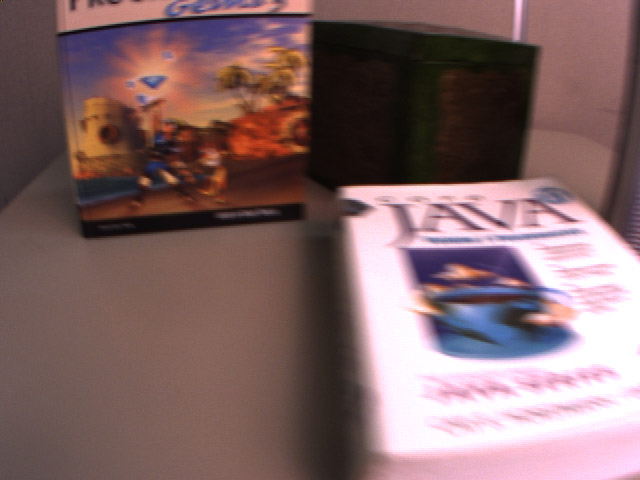
Frame 34 (target) |
|||||
The baseline flow is inaccurate, as indicated by the distortion in the warping result. The text in our warping is much more legible than that of the baseline warping. The illustrations are also more accurately preserved by our method.
Concatenated flows
We show warping results between concatenated flows to better demonstrate the differences between the two methods.
Frame 20 to frame 25
In this example, the source (frame 25) is sharp, and the target (frame 20) is blurred. Multiple blurred and sharp frames separate the source and target.
| Source | Baseline | Our method | Target |
|---|---|---|---|
|
|
|
|
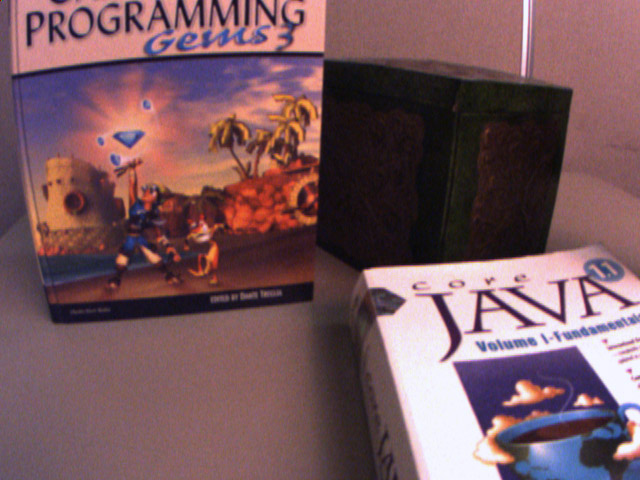
Source (frame 25) |
|||
Our method better preserves the structure and sharpness of the text and illustrations.
Frame 31 to frame 35
In this example, the source (frame 35) and target (frame 31) are both sharp. Multiple blurred frames separate the source and target.
| Source | Baseline | Our method | Target |
|---|---|---|---|
|
|
|
|
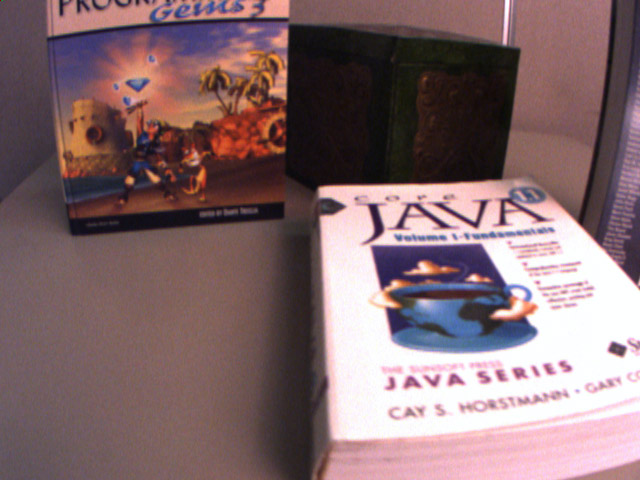
Source (frame 35) |
|||
Our result is more accurate, with the structure of the text and illustrations being better preserved overall. Both methods have significant drift in the decorative box in the background, which may require refininement of the concatenated flows (or additional temporal constraints) to be corrected.
